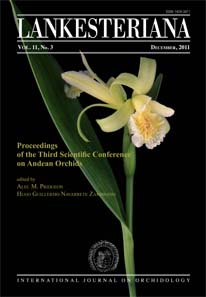Orchids in a changing climate
DOI:
https://doi.org/10.15517/lank.v11i3.18277Keywords:
Orchids, cloning, computing, DNA analysis, fossil orchid, conservation techniquesAbstract
Orchids have a long and distinguished recorded history, traceable back to the ancient Greeks. For two millennia or more, our knowledge of orchids remained sketchy, mainly because the main centers of learning were in temperate regions with poor orchid floras. Beginning with the Renaissance, knowledge increased more rapidly. Almost half a century ago, Professor William Stearn outlined this progress in his landmark lecture at the Third World Orchid Conference in London. However, knowledge has moved rapidly since then. In this lecture, I would like to update Stearn’s story. The availability of new technologies has produced unprecedented advances in many aspects of orchids from our understanding of the origins of orchids to dealing with threats to their future survival. The world has become increasingly aware of issues such as climate change that are likely to have a dramatic effect on the world’s orchids. I have identified five developments that have underpinned these new insights since Stearn’s lecture was delivered: • Cloning orchids; • Computing power; • DNA analysis; • The fossil orchid; • Conservation techniques.
Downloads
Downloads
Published
How to Cite
Issue
Section
License
According to the Open Access policy promoted by the University of Costa Rica, all the papers published by Lankesteriana are licensed under the Creative Commons copyright and can be downloaded free of charge. The journal holds copyright and publishing rights under the CC BY-NC-ND 3.0 CR license.
Before the publication of the materials submitted by the author(s) in LANKESTERIANA, the author(s) hereby assign all rights in the article to the Lankester Botanical Garden.





